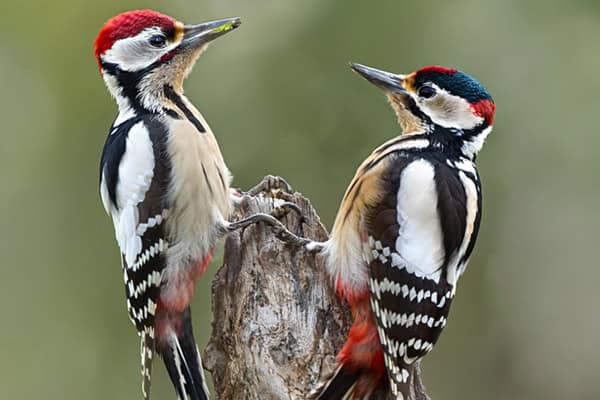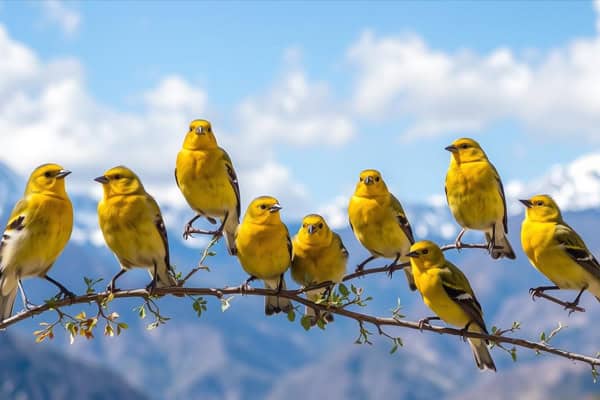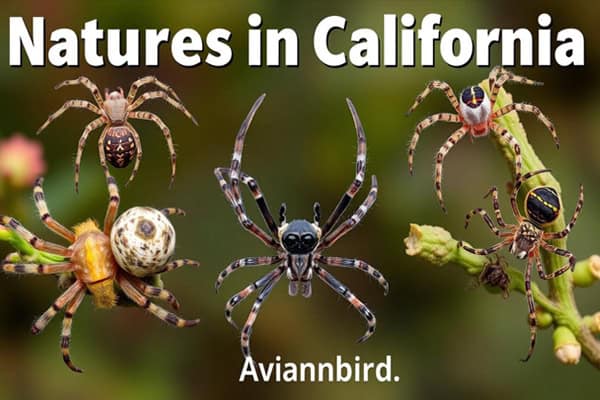4 Types Of Falcons in Michigan (With Pictures)
In Michigan, falcons are the sky’s stealth fighters, swift and elusive. Three species grace our skies regularly, while two are rare guests. Also, These five falcons, each with their own aerial prowess, are a sight to behold. Furthermore, They embody speed and precision, making every sighting an event. As a researcher, I’m drawn to their flight, their survival, their story. It’s a tale of nature’s finesse, right here in Michigan.
Here we’ll learn about different types of Falcons in Michigan
1. American Kestrel
- Scientific name: Falco sparverius
- Life span: 5-10 years
- Size: 8-12 inches
- Weight: 2.8-5.8 ounces
- Wingspan: 20-24 inches
- Status: Least Concern
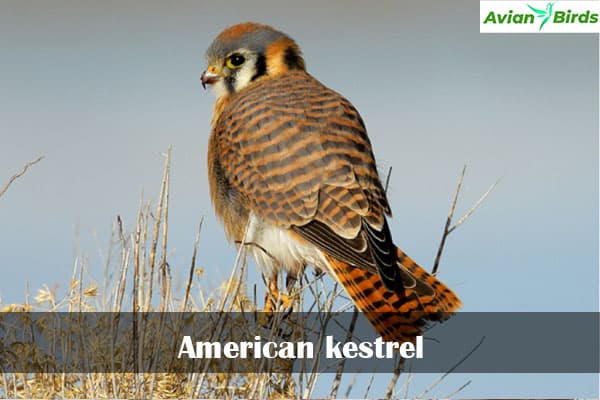
Identification
The American Kestrel is a little bird with big colors. The males are rusty red with some blue on their wings and head, and cool black marks by their eyes. The females are mostly a soft rusty orange with stripes on their wings, back, and tail.
Range
American Kestrels are truly international birds, calling both South and North America their home. In the north, they’re travelers, spending winters in Mexico’s warmth before heading to Canada for breeding when it’s warmer. But in the U.S., they’re locals, present throughout the year. Also, These birds are a testament to adaptability, thriving across a vast range of environments.
Diet and Foraging Habits
American Kestrels are pretty cool hunters. They eat lots of different small animals, like insects (think grasshoppers, dragonflies, and cicadas), reptiles, amphibians, other birds, and even rodents. So, first, they might snag a grasshopper, then later, catch a tiny lizard. It’s all part of their day!
Where to Find This Bird
American Kestrels are often spotted in open spaces like roadsides and fields. They love to perch on telephone poles, wires, or even dead trees. In places with fewer trees, they’ll use any tall structure they can find. You might also see them in urban parks, pastures, and farm fields. Also, They’re pretty adaptable and can make a home in many different environments. It’s always a treat to see one of these little falcons out in the wild!
2. Merlin Falcons in Michigan
- Scientific name: Falco columbarius
- Life span: 5-10 years
- Size: 9-11 inches
- Weight: 5-7 ounces
- Wingspan: 20-26 inches
- Status: Least Concern
Identification
Merlins, tiny falcons comparable to Mourning Doves in size, sport a blue-gray to black color on their back, wings, and head. Their underside is streaked with buffy to brown shades. While their color may vary by region, their general look is consistent, often highlighted by a distinct white stripe above their eyes. These little raptors are as charming as they are fierce!

Range
Merlins Falcons in Michigan are quite the travelers! During winter, they head to warmer places like Northern South America, Central America, Mexico, and parts of the U.S. When spring comes, they fly north, settling in the northernmost U.S., Canada, and Alaska. But some Merlins are homebodies, living year-round from the U.S. Northwest to Southwest Alaska. And a few even brave the cold, staying put in the northern states all winter. They’re adaptable, making the most of different climates!
Diet and Foraging Habits
Merlins has quite a varied menu! They mainly feast on small birds like waxwings and sparrows, and they don’t shy away from shorebirds either. But that’s not all; these raptors also munch on insects and rodents. It’s this diverse diet that helps them thrive in different environments and maintain their status as skilled hunters. Fascinating, isn’t it?
Where to Find This Bird
Spotting Merlins can indeed feel like a stroke of luck. These elusive falcons favor wooded areas for shelter and open spaces for hunting, often making them a surprise sighting. The best chance to catch a glimpse of these swift birds is when they’re in motion, darting through the air at incredible speeds in pursuit of their next meal. Keep an eye on the sky; you might just spot the flash of a Merlin on the hunt!
3. Peregrine Falcon
- Scientific name: Falco peregrinus
- Life span: 8-15 years
- Size: 14-19 inches
- Weight: 1.1-3.3 pounds
- Wingspan: 3-4 feet
- Status: Least Concern
Identification
Peregrine Falcons are amazing birds that are easy to recognize. They have a dark top that covers their back, wings, head, and neck. Their bottom side is lighter, with dark stripes, and they have bright yellow legs that stand out. These falcons also have cool markings on their face—dark patches that look like sideburns, which are actually just dark feathers that stretch down from their eyes to their cheeks.
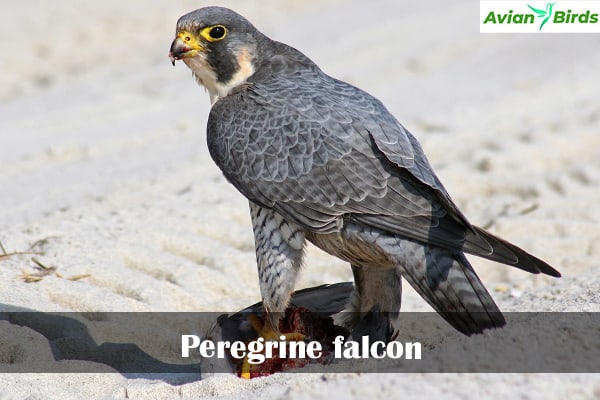
Range
The Peregrine Falcon is a bird that travels a lot across North America. Firstly, during the winter, it likes to stay in the warmer parts of the Southeastern United States and Mexico. Then, when summer comes, it moves up to Northern Canada. Additionally, it travels across many other places during the year.
Moreover, some Peregrine Falcons have special spots in the United States where they like to have their babies in the summer, like near Lake Superior. Also, there are places where they stay all year long, like near the Pacific Ocean and the Great Lakes.
Finally, it’s interesting to know that these birds live on every continent except for Antarctica, which is way too cold for them.
Diet and Foraging Habits
Peregrine Falcons are super speedy birds, known as the fastest in the animal world. They usually fly at about 70 miles per hour, but when they dive to catch their food, they can zoom down at an amazing 200 miles per hour! They use this super speed to catch birds like doves and ducks for their meals. But that’s not all; they’re also known to chase after many other kinds of birds. Sometimes, they even eat fish and small animals. It’s like they have their buffet in the sky!
Falcons are Rare in Michigan
4. Gyrfalcon
- Scientific name: Falco rusticolus
- Life span: 15-20 years
- Size: 20-25 inches
- Weight: 2-4 pounds
- Wingspan: 3-4 feet
- Status: Least Concern
Identification
Gyrfalcons Falcons in Michigan, the largest falcons, have different colors depending on where they live. In the high Arctic, you’ll find the white morph. These birds are almost all white, just like a Snowy Owl, but they’re actually big falcons. They have black spots on their wings which stand out against their snowy feathers.
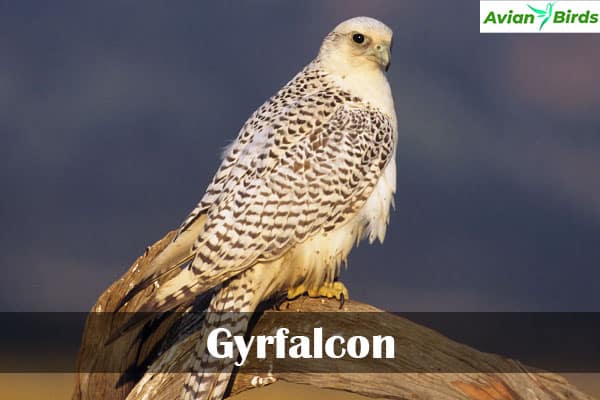
The gray morph lives a bit farther south. These Gyrfalcons have a gray back and head, with stripes on their belly. They also have distinctive dark teardrop shapes under their eyes.
Range
Gyrfalcons are big birds that have their babies up in the very cold Arctic. When it gets too cold, some of them fly down to the northern part of the United States to stay warm during the winter. But some gyrfalcons live in the middle and northern parts of Canada and Alaska, and they usually don’t move around; they stay in the same place all year.
Remember, this is just a rewritten version to make the information easier to understand for younger readers. Transition words like “when” and “but” help the sentences flow smoothly and connect the ideas better.
Diet and Foraging Habits
Gyrfalcons like to eat birds that are not too big or too small, like ptarmigans and birds that live near the sea. They also eat small animals like lemmings. These birds are really good at hunting; they fly high up and then swoop down fast to catch their food. It’s like they dive from the sky to surprise their prey.
Where to Find This Bird
Gyrfalcons are usually seen in the big open lands of the United States during the winter. They love places like the wide, cold tundras and the areas along the sea where there’s lots of space. This is because they need to look around for their food, and having a lot of room helps them see better and catch what they eat.
5. Prairie Falcon
Identification
Prairie Falcons are pretty birds with a light brown color on their back, wings, and head. Their stomachs are white and have brown bars across them. They look a bit different from Peregrine Falcons because they have a unique brown teardrop mark under their eyes. This mark stands out against the pure white color of their cheeks and chin, making them quite distinctive.
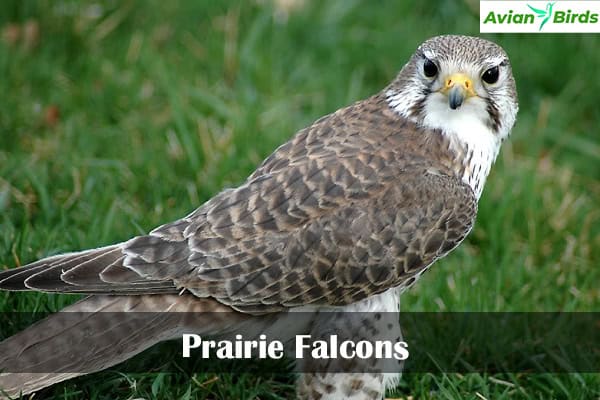
Range
Prairie Falcons are birds that you can find in the western part of the United States. They stay there throughout the year, including in most places west of Minnesota and Louisiana. They also make their homes in some areas of Mexico and southwestern Canada all year long. When winter comes, a few of these birds might travel eastward into more of the Great Plains states to spend the season.
Diet and Foraging Habits
Prairie Falcons have a diverse menu. Also, They eat lots of small mammals, and they also munch on insects and other birds. Just like their falcon cousins, they’re not picky eaters and enjoy a wide variety of bird species. It’s all part of their balanced diet in the wild.
Where to Find This Bird
Prairie Falcons live up to their name! Also, They love the wide-open spaces like grasslands, open fields, tundras, and farmlands. They choose to nest in areas with bluffs and cliffs, but you’re more likely to spot them while they’re hunting. Also, These birds are always busy looking for their next meal as they soar over the open land. Sometimes, you might even catch them taking a break, perched high on branches or telephone poles.
Check Our Previous Articles:
Final Thoughts:
Falcons in Michigan are indeed fascinating creatures, and it’s wonderful to hear about the successful conservation efforts in Michigan. Also, These birds are not only a testament to the beauty and diversity of wildlife but also a reminder of the importance of our commitment to preserving nature. It’s heartening to know that birdwatchers have the opportunity to witness these birds of prey in their natural habitat, thanks to the dedicated work of conservationists.


